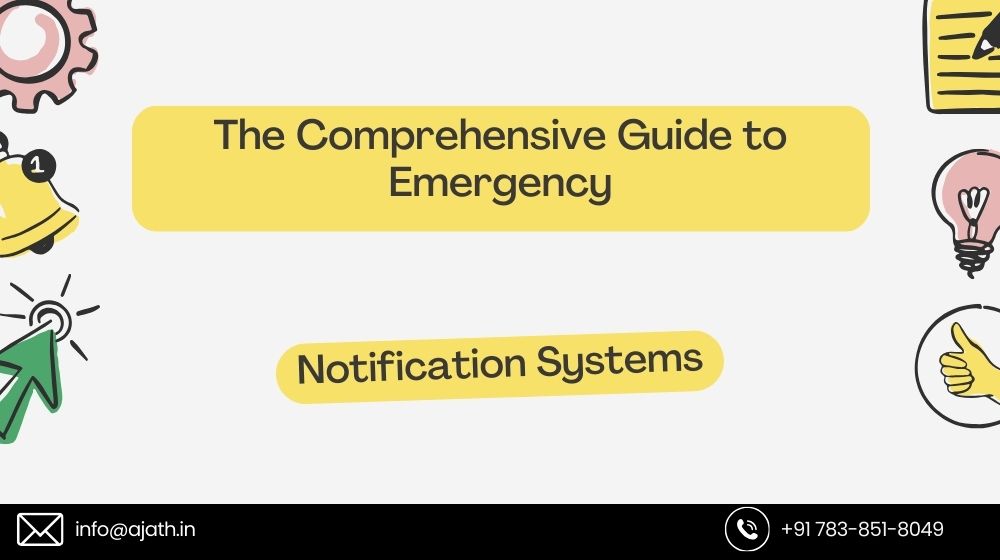The Comprehensive Guide to Emergency Notification Systems
In this day and age, where startling occasions or emergencies can happen all of a sudden, having effective crisis notice frameworks set up is significant. Whether in instructive foundations, working environments, networks, or public spaces, the execution of a compelling crisis warning framework is essential for guaranteeing the security and prosperity of people. This extensive aide plans to give an inside and out comprehension of crisis notice frameworks, covering their importance, types, best practices, and the fundamental components expected to lay out a hearty framework.
Understanding Emergency Notification Systems
Definition and Significance
Emergency notification systems are communication tools designed to relay critical information swiftly during emergencies or crises. These systems help disseminate alerts, warnings, and instructions to a targeted audience, ensuring prompt and appropriate responses to mitigate risks and protect lives and property. From natural disasters to security threats, medical emergencies, or other unexpected events, these systems play a vital role in alerting and guiding individuals during critical situations.
Importance in Various Environments
- Educational Institutions: In schools and universities, these systems are fundamental for addressing security threats, weather emergencies, or any unforeseen events that could affect the safety of students and staff.
- Workplaces: Businesses and organizations rely on these systems to communicate instructions and warnings during fire outbreaks, security breaches, or any crisis that demands immediate action.
- Public Spaces and Communities: Municipalities and public spaces use these systems to notify residents about severe weather, traffic disruptions, or any situation that requires community awareness and response.
Types of Emergency Notification Systems
Mass Notification Systems
These systems are designed to reach a large audience simultaneously, utilizing various communication channels such as SMS, emails, phone calls, social media, and digital signage.
Mobile Alert Systems
Mobile-based systems leverage smartphone applications or SMS alerts to reach individuals on their mobile devices, ensuring timely and direct communication during emergencies.
Weather Alert Systems
These specialized systems focus on weather-related emergencies, providing forecasts, warnings, and updates regarding severe weather conditions.
In-Building Notification Systems
Designed for workplaces or large facilities, these systems use audio-visual alerts, such as alarms and messages broadcast through speakers or visual displays, to guide individuals to safety within the building.
Key Elements of an Effective Emergency Notification System
- Speed and Reliability
The primary goal of an emergency notification system is rapid dissemination of critical information. The system must be reliable, ensuring messages reach the intended recipients promptly and consistently, minimizing delays in critical situations.
- Multiple Communication Channels
Utilizing multiple channels ensures redundancy and maximizes the likelihood of reaching individuals. SMS, emails, phone calls, mobile apps, social media, and public address systems are among the various communication channels available.
- Customization and Targeted Messaging
The ability to send targeted and customized messages to specific groups or locations is essential. Not all emergencies affect everyone uniformly, and the capacity to tailor messages ensures relevance and accuracy.
- User-Friendly Interfaces
The system’s interfaces for sending messages and managing recipients should be intuitive and easy to use, even during high-stress situations. Training and regular practice with the system are crucial for effective utilization.
- Integration with Other Systems
Seamless integration with existing infrastructure, such as security systems, weather monitoring tools, and databases, enables swift and automated responses, streamlining emergency communication processes.
- Compliance and Regulatory Considerations
Adherence to legal regulations and compliance standards, including data protection laws and industry-specific requirements, is vital for the effective and ethical operation of these systems.
Best Practices for Implementing Emergency Notification Systems
Conducting a Risk Assessment
Understanding potential threats and vulnerabilities specific to the environment is crucial. This assessment helps in tailoring the system to address the most probable emergencies.
Planning and Testing
Developing a comprehensive emergency response plan and conducting regular drills and system tests ensures preparedness and familiarity with the system among all stakeholders.
Training and Education
Educating users about the system and its protocols, along with regular training sessions, ensures that everyone understands how to respond appropriately in emergencies.
Continuous Improvement
Periodic evaluations and refinements to the system based on feedback, lessons learned, and technological advancements ensure its relevance and effectiveness over time.
Challenges and Considerations
Data Privacy and Security
Collecting and managing personal data for emergency notifications must adhere to stringent privacy regulations, requiring robust security measures to safeguard sensitive information.
Over-Reliance on Technology
Relying solely on technological solutions might pose challenges in instances where infrastructure failure or technical issues occur. A balance between technology and human response is crucial.
Alert Fatigue
Frequent or unnecessary alerts might desensitize individuals, leading to a disregard for critical messages. Ensuring the relevance and accuracy of messages is essential to prevent alert fatigue.
Conclusion
Executing a compelling crisis notice framework is a complex cycle that requests an extensive comprehension of likely dangers, innovation, correspondence methodologies, and human conduct in emergency circumstances. By embracing the accepted procedures, grasping the difficulties, and ceaselessly refining these frameworks, associations, foundations, and networks can altogether upgrade their crisis readiness and reaction capacities, guaranteeing the wellbeing and security of all people during unanticipated occasions or emergencies.













Leave a Reply